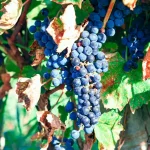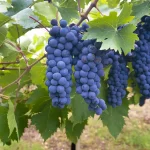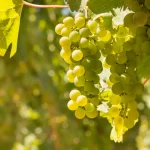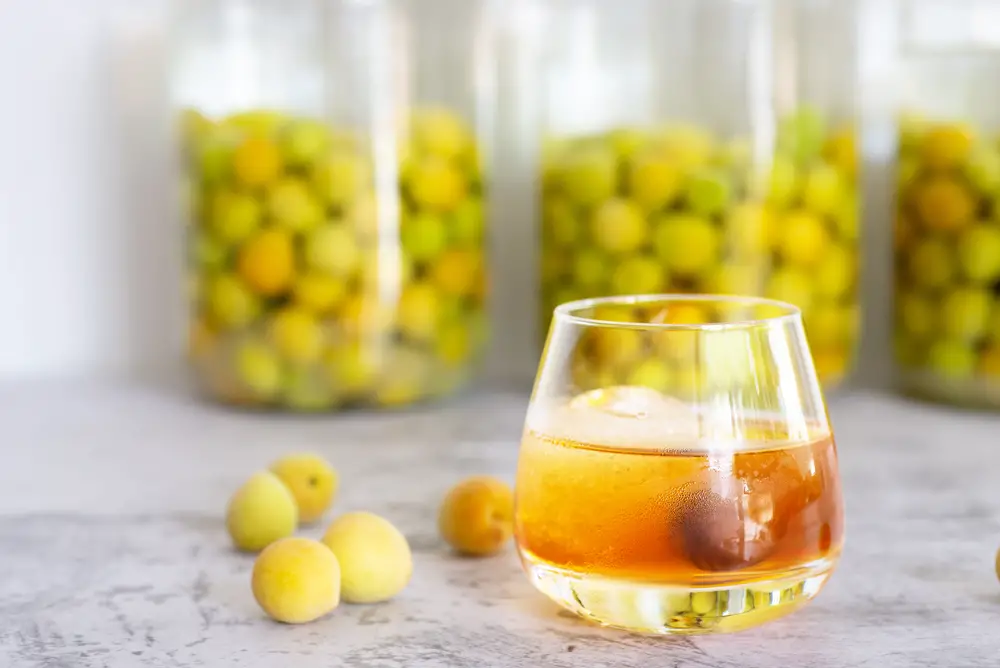The many varieties of wine on the market may be confusing for some people to understand. For example, why is White Zinfandel a red wine, despite its name? Why are some sweet and some dry? This unique blend is a perfect example of the diversity common throughout the wine world.
As one of the most popular blends on the market today, White Zinfandel is a crucial drink to understand. Here’s what you need to know about this drink if you’ve never had it before or even if you have been drinking it for years.
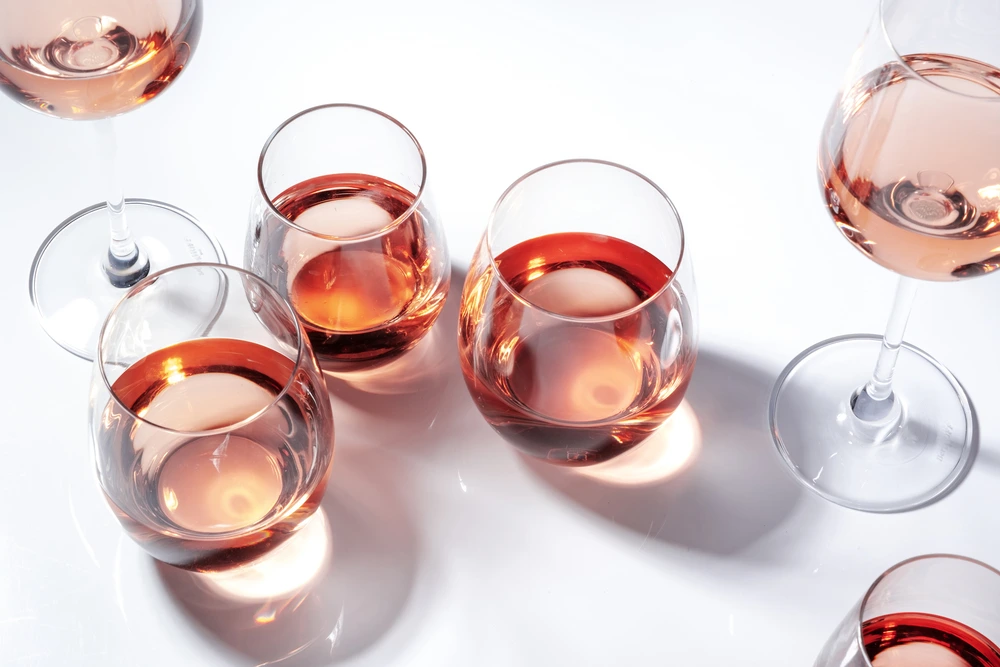
So, What Is White Zinfandel?
White Zinfandel is a relatively dry and tasty drink with a versatile profile that mixes well with a pretty broad array of different meals and situations.
It has been served at incredibly elaborate and fancy weddings and get-togethers and worked well as a box of wine for college parties or as a fun way for friends and family to have a tasty and enjoyable drink with their meal.
White Zinfandel is made only from Zinfandel grapes.
These grapes are grown in many parts of the world and are quite popular, but are grown mainly in America. A surprising 70% of all Zinfandel grapes are grown in the U.S., with about 10% in California alone! Quite contrary to muscadine wine, a more obscure wine native to the southeast of the United States.
As a result, White Zin is a uniquely American drink and is often considered the most common example of American winemaking. Whether or not that’s a good thing will depend on your preference.
The Zinfandel grape is a black and blue fruit that contains a light center and a surprisingly pale pink color throughout the fruit.
Amusingly, White Zinfandel is not a white wine, which often confuses people who try it for the first time. Instead, they get the color from their short contact with grape skins during the fermentation process.
Unlike dark red wines which have a long period of contact with their skin during fermentation, Rose wines have less contact with skins and are pink as a result.
White Zinfandel has gone through some rather unique ups and downs throughout its history.
When it first came out, it took some time to reach high levels of popularity. Unfortunately, it also experienced relatively low moments when its reputation was very low. These days, White Zinfandel is considered a classic drink, a classy option for many situations, and a wine that suits the average wine drinker’s taste.
Related: Differences between Red Zin and White Zin.
White Zinfandel vs. Rosé, What is The Difference?
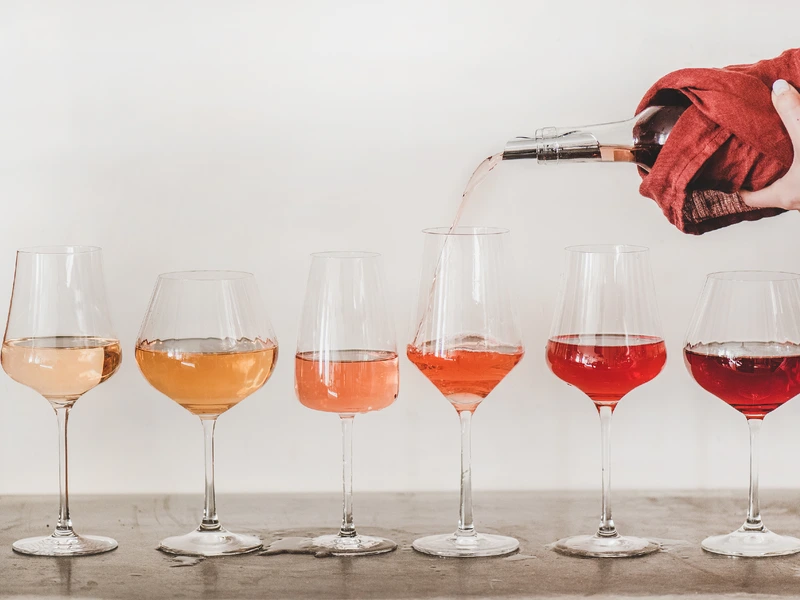
Rose and White Zinfandel wines are very similar in their production methods. Some may even say that White Zinfandel is a type of Rose, and there’s some truth to that.
However, Zinfandel differs enough from Rose to deserve a separate category. So what sets it apart from the Rose? The first thing that makes it different is the grapes used to produce this wine.
Rose winemakers have many different red grape options from which to choose. A typical Rose can be made from any red grape and may be used with various options to produce different taste profiles. Check out our guide on rosé for more.
White Zinfandel is different from these Roses. It can only be produced with… drum roll… Zinfandel grapes. Whether grown in America, Europe, Africa, or Asia, this wine must use Zinfandel.
As a result, the Zinfandel typically has a more specific taste profile than the average Rose. A Rose can vary heavily because of the many types of red grapes a batch may use.
While winemaking methods may help make the final batch reasonably consistent, a Rose from one year may taste wildly different next year. White Zinfandel has a similar potentially different taste profile but much less variant.
Rose’s taste is typically a bit more diverse than the White Zinfandel, with a dryer and a more decadent array of aftertastes.
Zin typically has a sweeter and simpler taste, which isn’t necessarily bad. There’s a reason why it took off in popularity, after all. The average complexity of a Rose may be too much for some beginner wine drinkers. A White Zinfandel is perfect for those just starting in the wine world.
White Zinfandel Flavor Profile
White Zinfandel is one of the most diverse wine types on the market today.
While it typically has a relatively dry taste profile traditionally, semi-sweet and even sweet varieties are available.
This diversity of dryness is another reason why White Zinfandel is both popular and confusing to wine fans. Some might find a dry bottle that suits their tastes and then a sweeter one that they don’t like or vice versa.
Typically, the White Zinfandel is a somewhat fruity wine at every level of sweetness. Expect red fruit tastes (cranberry and raspberry) mixed with a light citrus flavor.
Some people notice an aftertaste of plums and even raisins when enjoying a glass of White Zinfandel. The overall taste and mix can be affected by various factors that may change based on where the grape is grown.
For example, sudden temperature changes during the growing season (or growing in cooler regions in general) tend to bring out more raspberry and even strawberry tastes in the wine.
Conversely, warmer areas tend to produce White Zinfandel with pepper, cherry, anise, and even blackberry undertones. Surprisingly, even the time of the day in which the grapes were harvested may affect its overall taste!
In most cases, the White Zinfandel will possess the natural sweetness of grapes and other fruits without being very high in sugar.
Interestingly, it typically has one of the lowest-calorie profiles of any wine, sometimes as low as 108 calories per five-ounce serving. As a result, it is often a good choice for those trying to watch their figure or lose weight.
Which Food Pairs Well With White Zinfandel Wine?
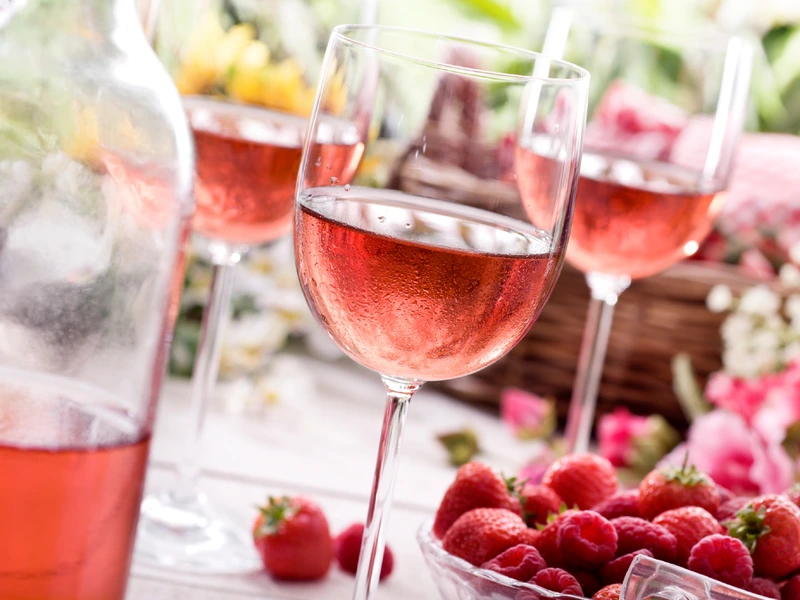
White Zinfandel is a diverse wine that will go perfectly with a surprising array of different foods and meals.
Generally speaking, dry and sweet Zinfandel wines go better with varying types of food. Understanding these options is critical as it can help you avoid making any mistakes when pairing up this wine. Let’s start by looking at what pairs best with dry White Zinfandel first.
Dry Zinfandel:
Try to pair your dry Zinfandel with a fish meal complemented with fresh or roasted vegetables. The naturally smooth taste of the Zinfandel goes perfectly with these foods and can draw out aftertastes you didn’t even know your fruit or vegetable could create.
However, a dry Zinfandel also goes perfectly with salads and can take out the punch of tomatoes, oranges, melons, and other fruits. Blue cheese is the best cheese option for this drink.
Sweet Zinfandel:
For your sweet White Zinfandel, smoke some rich meats like steak, beef, or pork, and use the wine either as a glaze or as a drink while you eat.
Pasta dishes also blend well with this wine, mainly when using some rich and creamy sauces. Then, add the Zin to the sauce to boost the flavor even more. As for cheese, any soft cheese will blend well with this delicious wine option.
We’ve also found that a White Zin can blend perfectly with lamb or egg-rich dishes, no matter their sweetness or dryness. The overall flavor of the White Zinfandel brings out the lingering aftertastes of your lamb, enhances the punch of your eggs, and produces a surprising array of taste varieties.
Some people even love this wine as a dessert option, pairing it with ice cream and cake.
A History of White Zinfandel
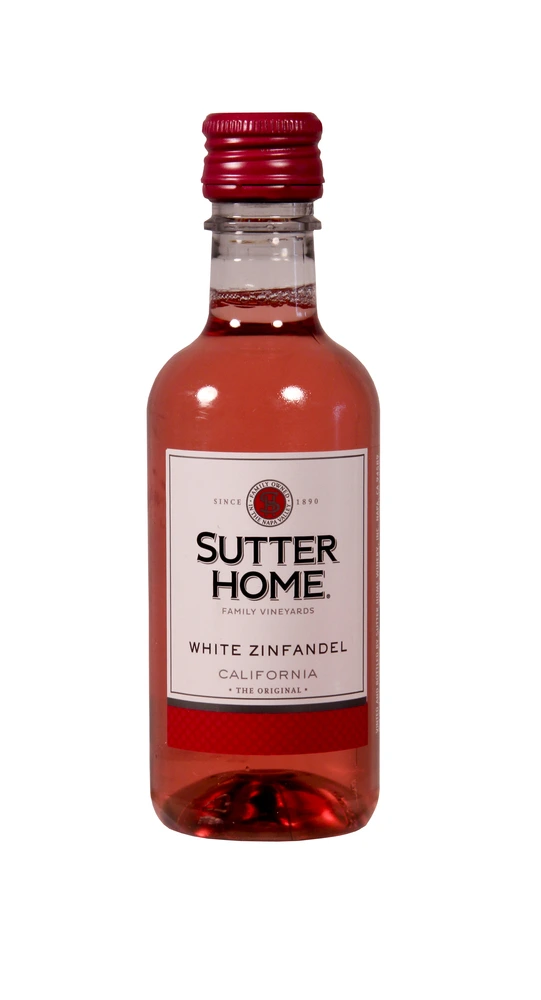
White Zinfandel is an example of how people can turn an accident into something bigger.
In this way, it is similar to the creation of penicillin, although nowhere near as important as that medically groundbreaking event. However, it came about in a similarly accidental way, which makes White Zinfandel one of the most fun wines to talk about and research.
It started in 1948 at the Sutter Home winery.
This California winery was trying to produce a bold and intense wine from Zinfandel grapes. Their previous batches had sold well but didn’t have the punch they were hoping to create. As a result, they decided to try something different.
By reducing the juice-to-skin ratio, they believed that they could achieve the desired effect. This ratio comes into play during the fermentation process mentioned above. In most wineries, that would have been the end of the story, and this new Zinfandel wine would have sat for a few weeks before being bottled.
However, Sutter Home noticed something strange. The liquid they had strained from the Zinfandel after a few days (about 500 gallons) had a subtle pink color and a pleasant taste that reminded them of a Rose. So why not bottle it up, market it, and sell it?
Here’s where the misleading White Zinfandel name originated.
Sutter Home believed that the name Rose would drive away from the American wine drinkers who were their primary customers. So, they called it a White Zinfandel, which was a more straightforward name.
So what if it wasn’t a white wine? They believed the taste would be enough to sell it. Best of all, they were avoiding wasting any product and were making a profit. What could go wrong? Well, after a brief burst of intense popularity, much did to wrong.
Wavering Popularity
White Zinfandel remained an inexpensive drinking option for many years after its debut but did not reach its full peaks of popularity until after 1975.
However, another mistake occurred that helped this wine become very popular during this year. Sutter Home produced a batch that experienced Stuck Fermentation, where the yeast dies before it converts the fruit sugars into alcohol. The resulting wine was lovely and easy to enjoy: and its popularity went through the roof.
Unfortunately, other wineries decided to follow Sutter Home’s example and began producing cheap, poor-quality copies of the original White Zinfandel.
Many started making it their go-to box wine option because it was so cheap to make and easy to sell in a box. This change damaged White Zinfandel’s reputation, as serious wine drinkers considered it little more than wastewater.
Finally, A New And Refined White Zinfandel
In recent years, the Rose wine revolution has transformed the wine market.
As the millennial population grew to adulthood and drinking age, they mostly enjoyed cheap, boxed, White Zinfandel wines throughout college and high school. However, their taste for this wine led them to other Rose wines with more diverse and rich flavors, creating a boom in Rose interest.
After this increased popularity, some Californian winemakers started to produce a higher quality of White Zinfandel.
They focused on a drier and less intensely sweet variety that competed surprisingly well with other Rose wine options. As a result, the overall taste is more prosperous, more diverse, and more accessible for wine snobs to accept. Amazingly, after 80 years, White Zinfandel is considered a top wine.
Before trying your first bottle of this new White Zinfandel, you may want to prepare yourself a little for its change.
The intense sweetness typical in cheap boxed wines is mainly gone. While it is true that some sweeter modern White Zinfandel blends exist, the wine mostly has a reasonably dry flavor, one that may not appeal to those who grew up drinking their favorite boxed wines.
Critically, you must also prepare to mix your Zinfandel with a broader array of different foods and serve it using a few simple tips that minimize any issue.
We broke down some of the most common tips for enjoying White Zinfandel below. In this way, you can try out this wine for the first time without running into any issues enjoying its now rich and diverse taste profile.
Get the Best From Your White Zinfandel Using These Tips
While a White Zinfandel is a little different than a traditional Rose, it is also worth pointing out that they are similar enough to serve in the same way.
For example, you probably want a good Rose wine glass when enjoying your White Zinfandel. These glasses help to serve your White Zin properly by including a variety of different design elements that make it easier to enjoy.
For example, a flared lip Rose glass will direct your wine to the tip of your tongue before it goes to the rest of your mouth. This helps to focus your wine on the more sweet-sensitive area of the tongue.
Most people who drink a White Zin in this way find that it cuts back on the bite of the wine and makes it easier to enjoy. This option is often best for younger White Zinfandels, including those younger than five years.
Older White Zins (typically, beyond seven or eight years) probably do best with a slightly tapered Rose wine glass.
This more mature wine is generally not as potent as a young one, and has a less intense sweetness to it. As a result, you can expect a more diverse and rounded body, one that blends well with a variety of different tastes. But, again, experimenting a little may help you find the best option.
Lastly, we strongly recommend serving your White Zin at room temperature and pairing it with either a sharp cheddar or a rich provolone. These cheeses help to absorb some of the potency of the wine, while the Zin makes the cheese a little less intense and sweeter.
Croissants also go perfectly with a White Zinfandel: we strongly suggest a plain croissant without butter, chocolate, or other toppings.
- Shrimp Cocktail (and More) Wine Pairing Guide - 09/06/2022
- What Wine Serving Sizes Look Like: Standard Size and More - 08/06/2022
- How Much Sugar is in Wine: Glass and Bottle Sugar Content - 08/06/2022

